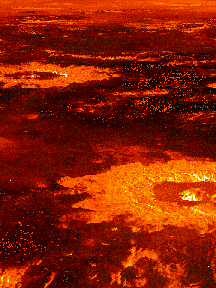This is an image of Venus.
Click on image for full size
NASA/JPL
The Earliest History of Venus
The terrestrial planets formed about 4 Billion Years ago. As the process which formed them came to an end, the planets may have been left in either of the following two states:
- very warm, with a softer & pliable interior. Planets gain heat through radioactive elements inside. The planet separates into layers, and the heavy iron falls to the center of the planet to form a core. There is probably abundant water on the surface. There is probably volcanic activity as well as plate tectonics driven by the heat from inside.
- cold and rocky, needing to be warmed from the inside before activity is seen on the surface. The planet never separates into layers, the heavy iron stays near the surface, and the planet never forms a core.
With Venus, the first case is probably the most likely.
You might also be interested in:

How did life evolve on Earth? The answer to this question can help us understand our past and prepare for our future. Although evolution provides credible and reliable answers, polls show that many people turn away from science, seeking other explanations with which they are more comfortable.
...more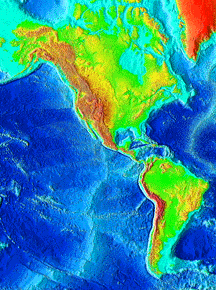
A planetary body, whether the body is a planet or a moon, cools slowly by radiating energy away into space. The warmth remaining inside a body controls what sort of surface activity, atmospheric activity,
...more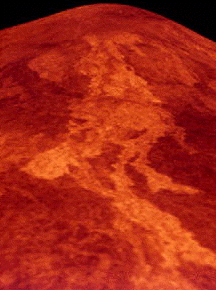
The terrestrial planets formed by accretion of rocky material and volatiles out of the primitive solar nebula. As they finished forming, about 4 Billion Years ago, the surface continued to be bombarded
...more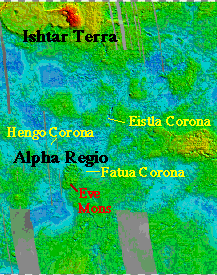
Alpha Regio and Ovda Regio are examples of what is known as a "Plateau Highland" of Venus. Among the volcanic features of Alpha Regio is Eve Mons. Unlike volcanic rises, plateau highlands have few volcanoes,
...more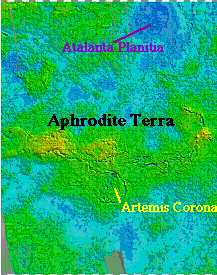
Aphrodite Terra, the Greek name for the goddess Venus, is about half the size of the African continent, and is to be found along Venus' equator. Aphrodite Terra is different from Ishtar Terra in that,
...more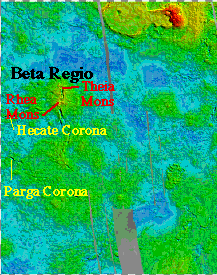
Beta Regio and Atla Regio are examples of what is known as a volcanic rise. Volcanic rises are broad, sloping highlands over 1000 km across. They are cut by deep troughs 100-200 km across. These troughs
...more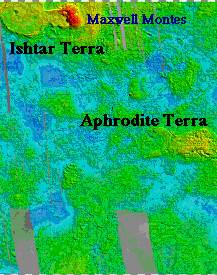
Ishtar Terra is one of the Plateau Highlands of Venus, is found near the north pole, and is about the size of the continental United States. Ishtar Terra contains the four main mountain ranges of Venus
...more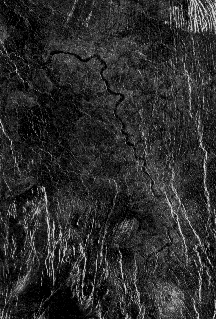
This image clearly shows a channel where something once flowed. Without proper measurements, scientists can only guess what sort of liquid may have flowed through this channel. On Earth, such channels
...more


